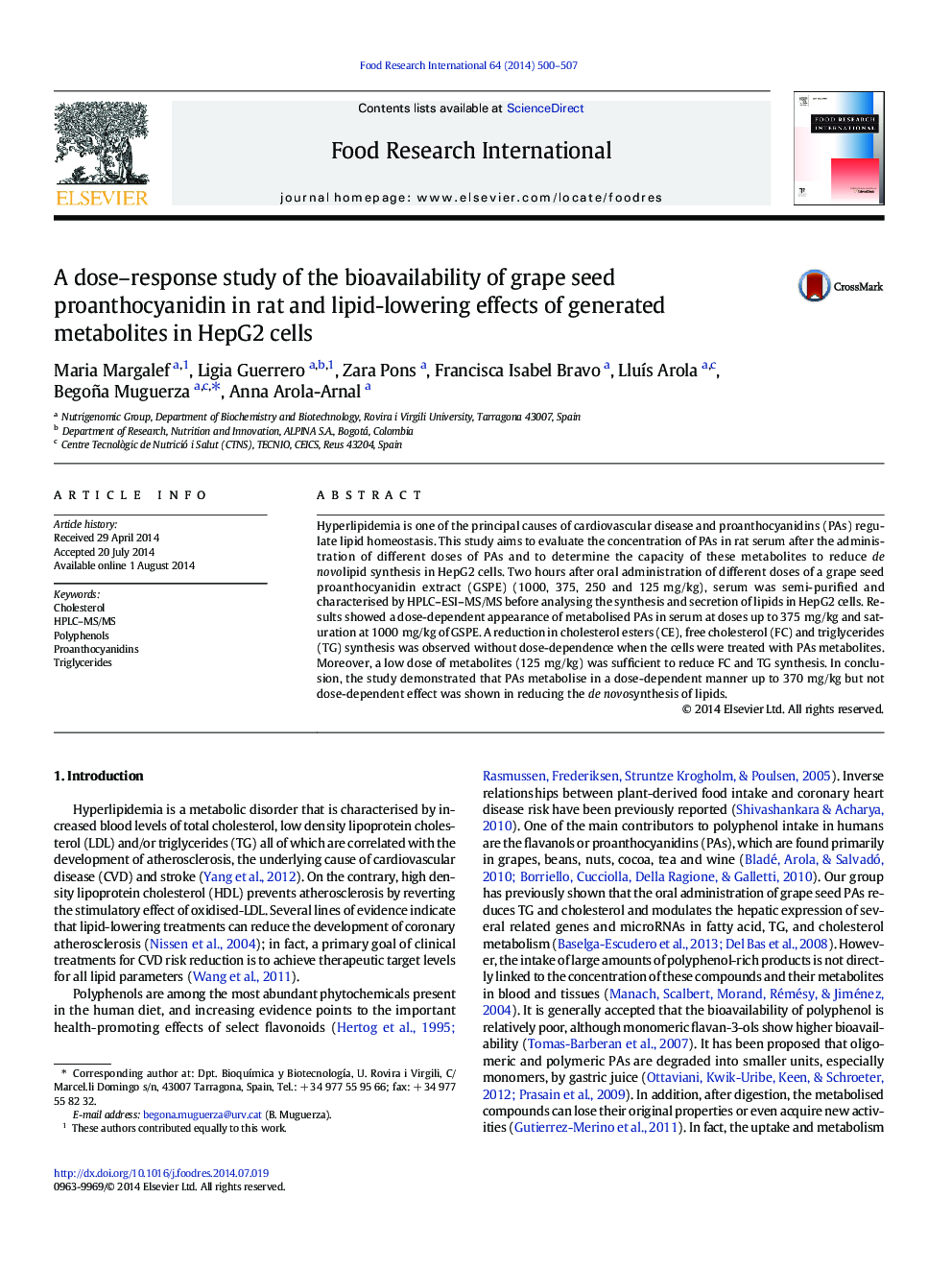| Article ID | Journal | Published Year | Pages | File Type |
|---|---|---|---|---|
| 6396676 | Food Research International | 2014 | 8 Pages |
â¢Grape seed proanthocyanidin serum metabolites appearance depends on the dose.â¢Proanthocyanidins are metabolised proportionally of ingested amount up to 375 mg/kg.â¢A saturation of the system is observed when the rats ingest 1000 mg/kg.â¢Lipid-lowering effect of serum proanthocyanidin metabolites is not dose-dependent.â¢Low dose of 125 mg/kg is effective in reducing the de novosynthesis of triglycerides.
Hyperlipidemia is one of the principal causes of cardiovascular disease and proanthocyanidins (PAs) regulate lipid homeostasis. This study aims to evaluate the concentration of PAs in rat serum after the administration of different doses of PAs and to determine the capacity of these metabolites to reduce de novolipid synthesis in HepG2 cells. Two hours after oral administration of different doses of a grape seed proanthocyanidin extract (GSPE) (1000, 375, 250 and 125Â mg/kg), serum was semi-purified and characterised by HPLC-ESI-MS/MS before analysing the synthesis and secretion of lipids in HepG2 cells. Results showed a dose-dependent appearance of metabolised PAs in serum at doses up to 375Â mg/kg and saturation at 1000Â mg/kg of GSPE. A reduction in cholesterol esters (CE), free cholesterol (FC) and triglycerides (TG) synthesis was observed without dose-dependence when the cells were treated with PAs metabolites. Moreover, a low dose of metabolites (125Â mg/kg) was sufficient to reduce FC and TG synthesis. In conclusion, the study demonstrated that PAs metabolise in a dose-dependent manner up to 370Â mg/kg but not dose-dependent effect was shown in reducing the de novosynthesis of lipids.
